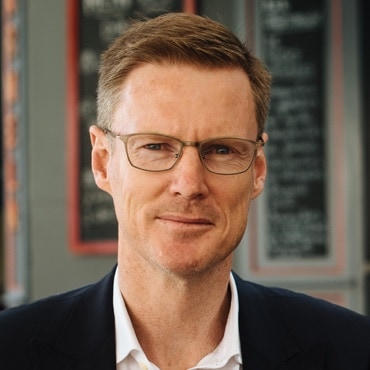If you’re not the go-to firm or person, you’re no one in marketing terms.
Don’t believe me?
Think of your own buying approach last time you had to find a builder, tradesperson, or professional in an area where you have little or no expertise.
How did you start the search? Who did you go with?
I was looking on a local search site for someone to trim a hedge recently. I found a range of people in my search who said they could do:
- Hedge trimming
- Gardening
- Carpentry
- Building repairs
- Handyman services
- Painting
- Flooring
- Paving
- Landscaping
Did the fact that my potential hedge trimmers claimed they could do a seemingly endless series of other jobs fill me with confidence?
Absolutely not.
In the end I went for a firm that seemed to at least specialise in gardening-related services.
The same issues apply to any search.
If you found out you had a serious illness would you let yourself be treated by a GP? No way.
Generalists are scary; specialists feel safer.
The Marketing Conundrum
I know you want to reach as many people as possible in your marketing. However, the way to do it is not to cast a wide net. It’s to go narrower.
A recent blog by Seth Godin said it brilliantly:
And so we fall all over ourselves to dumb it down, average it out, pleasing everyone and anyone.
You can see the problem.
When you seek to engage with everyone, you rarely delight anyone. And if you’re not the irreplaceable, essential, one-of-a-kind changemaker, you never get a chance to engage with the market.”
Seth’s advice?
Find the minimum viable audience (MVA); the smallest possible market that can sustain you. Become great at serving those clients you really love.
And then, ironically enough, the word will spread .”
The Problem with Averages
Of course it makes sense to listen to your clients…. doesn’t it?
Well, sometimes.
As Steve Jobs said, “It’s really hard to design products by focus groups. A lot of times, people don’t know what they want until you show it to them.”
In other words, be very careful about the types of client research you do.

Yes, we should always be listening to our clients and identifying problems or challenges that cause them some degree of pain. Removing these pain points can lead to service innovation, be it small or large.
However, asking clients what they want often leads to poor quality responses because clients have no idea what you might be capable of building or developing.
Even worse, if you try to create services that appeal to a broader audience in a misguided attempt to attract more clients, you can find yourself with something no one seems to respond to.

Go and look at almost any financial advisers website and you’ll see similar claims to my hedge trimmers; advisers who claim to do:
- Investments
- Pensions
- Insurance
- Mortgages
I know it might be true, but these sort of bland claims just make you look like everyone else.
Re-Focusing
If you’ve been in business for quite a while (i.e. you’re not a startup), then sitting down and re-focusing on who you are as a business can be hugely beneficial.
Try this exercise:
1. Imagine you’ve just purchased your current business from another retiring adviser. Now ask yourself:
- What assets does the business have?
- What are the businesses clear strengths?
- How could you double down on those strengths?
- What’s not so good about the business?
- What could you let go of, sell, or jettison from the current business, so you can focus on the strengths?
2. How would you tweak or reposition this business to speak to your true target audience? (i.e. the audience you love to serve)
3. What pain points can you identify in your target audience?
- How could those pain points be reduced or removed?
- Are there new services you could provide?
- Are there partners you could align with who could provide complementary or adjacent services to your clients?
The Formula for Great
If you can run the 100-metre sprint in 9.9 seconds you’re very quick. However, you’ll live on a Government grant and probably earn £80,000 a year.

If you can run the 100 metres in 9.58s you’ll be world-famous and earn £30M a year. Both athletes train just as hard. However, a small difference in performance creates a massive difference in financial outcomes and enjoyment.
Generating your small difference in performance is all about where you spend your limited time, money and energy. How narrow can you go, focusing on the people you love to serve?
This is where the game-changing market insights and innovations occur.
If you’re not the go-to firm or person, you’re no one in marketing terms. Find your niche and become that someone.
Going narrow is how you become the go-to firm or person in your market. Maybe it’s time to revisit who you work with and take your business to a new level of performance.
Let me know how you go.
If you want to grow, go narrow and focus on the people you love to serve

Have you loved this week’s blog? Really? Then do yourself a favour and sign up below to receive it weekly. You’ll get it before anyone else and you can wave goodbye at any time (although I don’t think you’ll want to)



0 comments to " Reaching Your Maximum Audience "